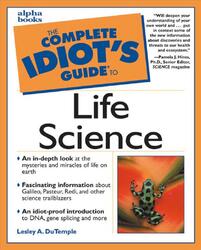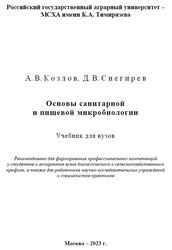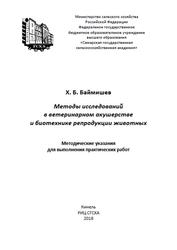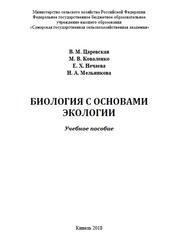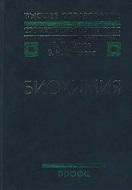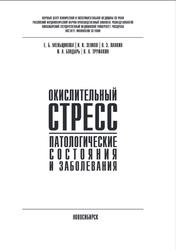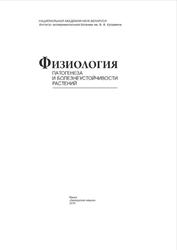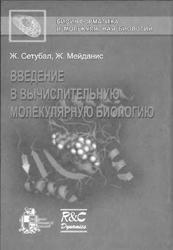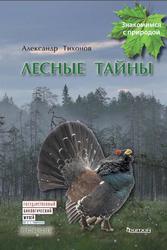Фрагмент из книги:
The techniques to control the growth of microorganisms have been shaped by both cultural and scientific advances. From the days of early food preservation—fermentation of milk products and smoking of meats—to extend the shelf life of foods, practical needs have contributed to the development of techniques and tools required for sterilization, disinfection, and antisepsis.
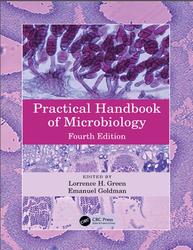
Bacterial Systematics.
SystematicsBy the 1930s, bacterial taxonomy had already become quite complex with more than 2,700 species recognized in the fourth edition of Bergey’s Manual of Systematic Bacteriology (note: most of these species no longer exist). Numbers of new species and genera continued to be described as more metabolic, phenotypic, and structural data became available. Where bacteria should be classified was highly speculative with many scientists believing they should be grouped with plants — even the seventh edition of Bergey’s in 1957 still classified them with plants.
During the mid-to-late 1930s, however, a movement began that culminated in a proposal by Stanier and van Niel in 1962 to accept a clear division between bacteria (prokaryotes) and animals and plants (eukaryotes). This separation was also reflected in the 1974 eighth edition of Bergey’s Manual. Concurrent to these changes was a drive to codify the nomenclature of prokaryotes. The first edition of the International Code of Nomenclature of Prokaryotes was published in 1957 with the goal for those who use scientific names of microorganisms “to use correct names and to use them correctly.” However, reclassification of bacteria and establishment of The Code did not alleviate the myriad problems associated with the existing taxonomy, including duplication of names, lack of type cultures, and poorly characterized or described taxa.
Contents.
Preface.
About the Editors.
Contributors.
Part I Practical Information and Procedures.
1. Sterilization, Disinfection, and Antisepsis.
Michael G. Schmidt.
2. Quantitation of Microorganisms.
Brad A. Slominski and Peter S. Lee.
3. Culturing and Preserving Microorganisms.
Lorrence H. Green.
4. Stains for Light Microscopy.
Stuart Chaskes and Rita Austin.
5. Identification of Gram-Positive Organisms.
Peter M. Colaninno.
6. Identification of Aerobic Gram-Negative Bacteria.
Donna J. Kohlerschmidt, Lisa A. Mingle, Nellie B. Dumas, and Geetha Nattanmai.
7. Plaque Assay for Bacteriophage.
Emanuel Goldman.
8. Phage Identification of Bacteria.
Catherine E.D. Rees and Martin J. Loessner.
9. Phage Display and Selection of Protein Ligands.
Geir Åge Løset, Wlodek Mandecki, and Inger Sandlie.
10. Diagnostic Medical Microbiology.
Lorrence H. Green.
11. Modern Diagnostic Methods in the 21st Century.
Lorrence H. Green and Alan C. Ward.
12. Antibiotic Susceptibility Testing.
Audrey Wanger and Violeta Chávez.
13. Bacterial Cell Breakage or Lysis.
Matthew E. Bahamonde.
14. Major Culture Collections and Sources.
Lorrence H. Green.
15. Epidemiological Methods in Microbiology.
Tyler S. Brown, Barun Mathema, and D. Ashley Robinson.
16. CRISPR.
Tao Xu, Megan L. Kempher, Xuanyu Tao, Aifen Zhou, and Jizhong Zhou.
Part II Survey of Microorganisms.
17. Taxonomic Classification of Bacteria.
J. Michael Janda.
18. Bacterial Cell Wall: Morphology and Biochemistry.
Stefania De Benedetti, Jed F. Fisher, and Shahriar Mobashery.
19. The Human Microbiome in Health and Disease.
Sandra B. Andersen, Menghan Liu, and Martin J. Blaser.
20. The Phylum Actinobacteria.
Alan C. Ward, Nagamani Bora, Jenileima Devi, Alexander Escasinas, and Nicholas Allenby.
21. Archaea.
Nina Dombrowski, Tara Mahendrarajah, Sarah T. Gross, Laura Eme, and Anja Spang.
22. The Genus Bacillus.
Daniel R. Zeigler and John B. Perkins.
23. The Genus Bordetella.
Rita Austin and Tonya Shearin-Patterson.
24. The Genus Campylobacter.
Collette Fitzgerald, Janet Pruckler, Maria Karlsson, and Patrick Kwan.
Updated 2021: Janet Pruckler, Lavin Joseph, Hayat Caidi, Mark Laughlin, Rachael D. Aubert.
25. Chlamydiae.
Lourdes G. Bahamonde.
26. The Genus Clostridium.
Peter Dürre.
27. The Genus Corynebacterium.
Lothar Eggeling and Michael Bott.
28. The Family Enterobacteriaceae.
J. Michael Janda and Denise L. Lopez.
29. Haemophilus Species.
Elisabeth Adderson.
30. The Genus Helicobacter.
Ernestine M. Vellozzi and Edmund R. Giugliano.
31. The Genus Legionella.
Ashley M. Joseph and Stephanie R. Shames.
32. The Genus Listeria.
Sukhadeo Barbuddhe, Torsten Hain, Swapnil P. Doijad, and Trinad Chakraborty.
33. The Genus Mycobacterium.
Leen Rigouts and Sari Cogneau.
34. Mycoplasma and Related Organisms.
Bahman Rostama and Meghan A. May.
35. The Family Neisseriaceae.
Yvonne A. Lue.
36. The Genus Pseudomonas.
Layla Ramos-Hegazy, Shubham Chakravarty, and Gregory G. Anderson.
37. The Family Rickettsiaceae.
Timothy P. Driscoll, Victoria I. Verhoeve, Magda Beier-Sexton, Abdu F. Azad, and Joseph J. Gillespie.
38. Microbiological and Clinical Aspects of the Pathogenic Spirochetes.
Charles S. Pavia.
39. Staphylococcus aureus and Related Staphylococci.
Volker Winstel, Olaf Schneewind, and Dominique Missiakas.
40. Streptococcus.
Vincent A. Fischetti and Patricia Ryan.
41. The Genus Vibrio and Related Genera.
Seon Young Choi, Anwar Huq, and Rita R. Colwell.
42. Yersinia.
Ryan F. Relich and Meghan A. May.
43. Other Anaerobic Bacteria: Bacteroides, Porphyromonas, Prevotella, Tannerella, Fusobacterium, and Gram-positive Anaerobic Cocci.
Joseph J. Zambon and Violet I. Haraszthy.
44. Other Gram-Negative Bacteria: Acinetobacter, Burkholderia, and Moraxella.
Rebecca E. Colman and Jason W. Sahl.
45. Selected Zoonotic Pathogens.
46. Fungi.
Charles Adair.
47. Introduction to Parasites.
Purnima Bhanot.
48. Introduction to Bacteriophages.
Elizabeth Kutter and Emanuel Goldman.
49. Introduction to Virology.
Ken S. Rosenthal.
50. Emerging Viruses.
Meghan A. May and Ryan F. RelichContents.
Part III Applied Practical Microbiology.
51. Mechanisms of Action of Antibacterial Agents.
52. Mechanisms of Action of Antifungal Agents.
Jeffrey M. Rybak and P. David Rogers.
53. Mechanisms of Action of Antiviral Agents.
Guido Antonelli, Francesca Falasca, and Ombretta Turriziani.
54. Phage Therapy: Bacteriophages as Natural, Self-Replicating Antimicrobials.
Naomi Hoyle and Elizabeth Kutter.
55. Emergence of Antimicrobial Resistance in Hospitals.
Paramita Basu, Joshua Garcia, and Priyank Kumar.
56. Emerging Antimicrobial-Resistant Microorganisms in the Community.
57. Overview of Biofilms and Some Key Methods for Their Study.
Paramita Basu, Michael Boadu, and Irvin N. Hirshfield.
58. Biofilms in Healthcare.
Rebecca K. Kavanagh, Arindam Mitra, and Paramita Basu.
59. The Business of Microbiology.
Michael C. Nugent and Lorrence H. Green.
60. Launching a Microbiology-Based Company.
Leonard Osser.
61. Microbiology for Dental Hygienists.
Victoria Benvenuto and Donna L Catapano.
62. Microbiology for Pre-College Teachers.
Madge Nanney and Scott Sowell.
63. Microbiology for Home Inspectors.
William E. Herrmann.
Survey of Selected Clinical, Commercial, and Research-Model Eubacterial Species.
Index.
Бесплатно скачать электронную книгу в удобном формате, смотреть и читать:
Скачать книгу Practical Handbook of Microbiology, Green L.H., Goldman E., 2021 - fileskachat.com, быстрое и бесплатное скачивание.
Скачать pdf
Ниже можно купить эту книгу, если она есть в продаже, и похожие книги по лучшей цене со скидкой с доставкой по всей России.Купить книги
Скачать - pdf - Яндекс.Диск.
Дата публикации:
Теги: учебник по биологии :: биология :: Green :: Goldman :: микробиология
Смотрите также учебники, книги и учебные материалы:
Следующие учебники и книги:
Предыдущие статьи:


